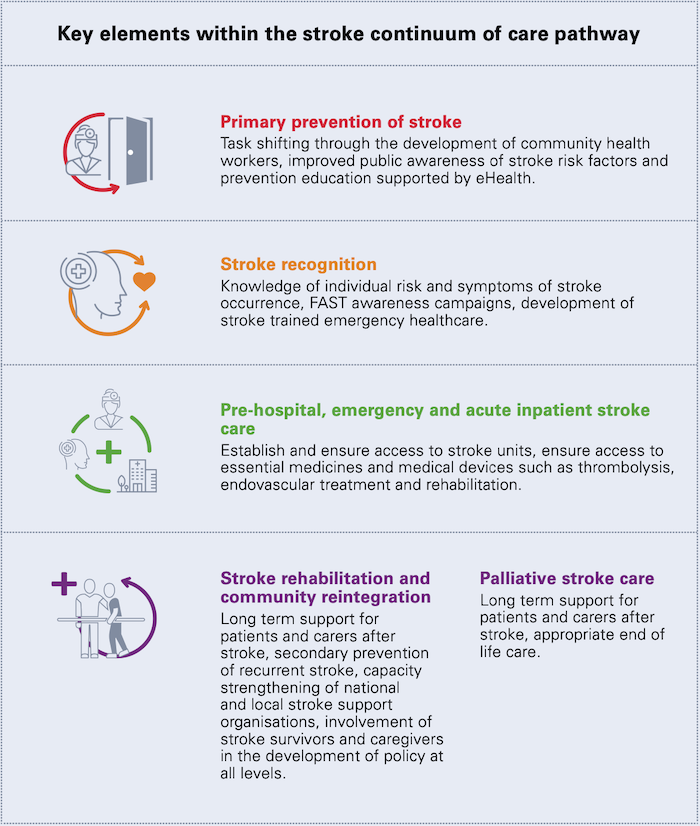Launch of updated policy brief, ‘Acting on Stroke and NCDs’ ahead of World Stroke Day 2022
20th October 2022

20th October 2022
This newly updated policy brief focuses on the stroke and NCD response in light of the COVID-19 pandemic and provides evidence-based recommendations to healthcare providers, policymakers and civil society across the stroke continuum of care, from prevention to treatment and rehabilitation, as part of working towards Universal Health Coverage (UHC) and other Sustainable Development Goal (SDG) targets.
Since the first landmark UN Political Declaration on NCDs in 2011, there has been a series of bold global political commitments to guide the NCD response. This includes reducing premature NCD deaths by one-third by 2030, the commitment governments made in 2015 as part of the launch of the UN Sustainable Development Goals (SDG target 3.4). Prior to the pandemic, fewer than 20 countries worldwide were on track to hit this target, showing that globally, health systems are ill-equipped to respond to the challenges posed by NCD co-morbidities. The syndemic of COVID-19 and NCDs has only spotlighted where NCD treatment and care is lacking.
Stroke remains the world’s second leading cause of mortality accounting for 6.6 million deaths a year. It is also the third leading cause of disability. Over 100 million people in the world currently live with the impact of stroke, which can include devastating loss of mobility, cognition and communication as well as negative effects on mental health, social inclusion, and income. With the global lifetime risk of stroke standing at 1 in 4 (an increase from 1 in 6 just a decade ago), it is shocking that only 38% of governments around the world report having a national strategy to specifically address stroke, and that only 3% have identified resources to deliver it. Meanwhile, the upward trajectory of stroke continues, driven by increased incidence in low- and middle-income countries where public stroke care systems are often under-developed. With an estimated global cost of about US$1 trillion per year, stroke represents a significant brake on international and national efforts to develop sustainable economic growth. Government action remains too slow and investment remains too low, especially when every US$1 spent on stroke prevention yields a return on investment of over US$10.
Given the existing backdrop on NCD and stroke mortality, it is imperative that health systems reorient from a single disease approach to integrated care packages across multiple NCDs through a holistic person-centred approach. The integration of NCDs into UHC must be at the core of national and global preparedness for future health threats. UHC ensures financial protection from high out-of-pocket payments and aims to leave no one behind, prioritising marginalised communities.
It is important to consider comprehensive care for NCD integration into UHC. All chronic diseases demand the continuum of care, which includes health promotion and prevention, screening, early diagnosis, treatment and care, rehabilitation and palliative care. Comprehensive UHC ensures essential services, including essential medicines, are included in national benefit packages in order to improve the health and wellbeing of populations. Without integration of stroke prevention, treatment and rehabilitation into national NCD strategies, it will be impossible for governments around the world to achieve the NCD and UHC targets within the SDGs that they set for themselves. This new policy guide intends to support the understanding and collective efforts of key stroke and NCD stakeholders and move us on at pace, towards the goals and commitments made by our governments to improve health for all.

Acting on stroke and noncommunicable diseases: Preventing and responding to stroke to work towards Universal Health Coverage is complemented by A Life Free from Stroke the WSO’s Global Policy Agenda.
Latest data on stroke prevalence, mortality and morbidity can be found in the WSO Global Stroke Factsheet.